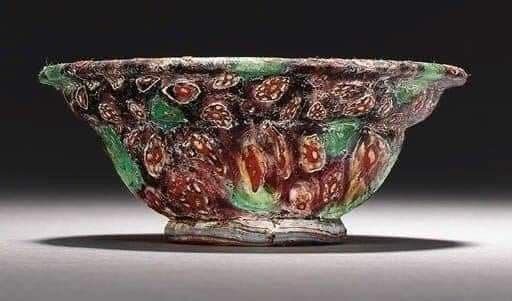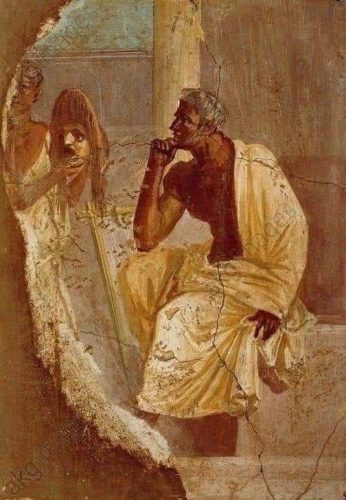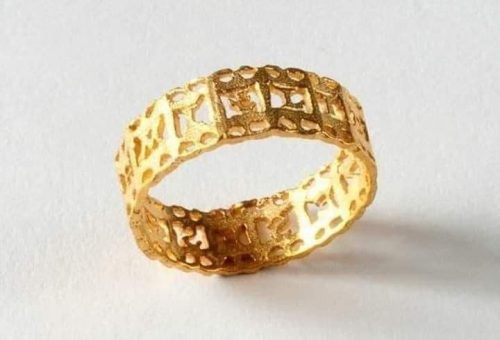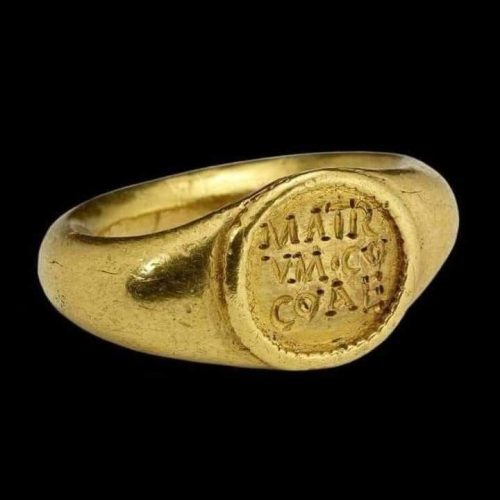
In the realm of ancient artifacts and archaeological wonders, the Roman world stands as an eternal source of fascination. The relics that have survived through millennia offer us glimpses into the lives, artistry, and culture of this formidable civilization.
In this article, we embark on a journey through time, unveiling five remarkable finds that connect us to the ancient Romans, spanning from the 1st century BC to the 4th century AD.
- Gold Rings from Corbridge, England
Our journey begins in Corbridge, England, where two exquisite gold rings from the 2nd century AD have recently surfaced near the iconic Hadrian’s Wall. The first of these rings bears a central engraving that has piqued the curiosity of historians and enthusiasts alike.
While the inscription remains partially deciphered, the word “mater” stands out, hinting at a deeper story yet to be uncovered. The quest to decode the rest of this mysterious inscription continues, and the promise of new revelations is exciting.

The second gold ring is a testament to the presence of women in this ancient military outpost. Inscribed with the words “aemilia, long life to you,” it belonged to a woman, shedding light on the significant female community that existed at Hadrian’s Wall, consisting of soldiers’ wives and companions. This discovery underscores the multifaceted nature of life in Roman frontier settlements.
- A Fragment of Pompeian Fresco
From the northern reaches of England, we journey southward to the ruins of Pompeii, where a fragment of fresco has survived the ravages of time. This fragment, akin to a temporal raft, drifted down to us through the ages, preserving the artistry and storytelling prowess of the Romans.
The fresco beautifully portrays an actor and a tragic mask, offering a glimpse into the world of Roman theater and the emotions it sought to evoke. It is a testament to the enduring power of visual storytelling.
- Mosaic Glass Cup from the 1st Century BC
Moving on from the world of paintings and engravings, we arrive at a breathtaking discovery from the 1st century BC—a “mosaic glass” cup. This remarkable piece of craftsmanship is a testament to the Roman mastery of glasswork. Mosaic glass, characterized by intricate patterns and vibrant colors, was a highly coveted art form during this era. This cup, with its intricate mosaic design, transports us back in time, allowing us to appreciate the intricate skills of Roman artisans.

- Glass Decorated with Dolphins from the 4th Century AD
Our journey through the Roman world culminates with a delicate and original glass artifact adorned with dolphins, dating back to the 4th century AD.
The depiction of dolphins, symbolizing grace and freedom, holds a special place in Roman art and culture. This exquisite glasswork, with its playful yet elegant design, serves as a testament to the enduring creativity and innovation of Roman craftsmen even as the empire neared its twilight years.
Conclusion
The allure of the Roman world never ceases to captivate us, and these five exceptional finds offer a tantalizing glimpse into its depths. From the enigmatic inscriptions on gold rings in Corbridge to the vivid fresco fragments of Pompeii, and from the intricate mosaic glass cup of the 1st century BC to the charming glass adorned with dolphins from the 4th century AD,
each discovery is a testament to the enduring legacy of Roman artistry, craftsmanship, and culture. As we continue to unearth treasures from this ancient civilization, we are reminded of the inexhaustible wellspring of history that enriches our understanding of humanity’s past.







